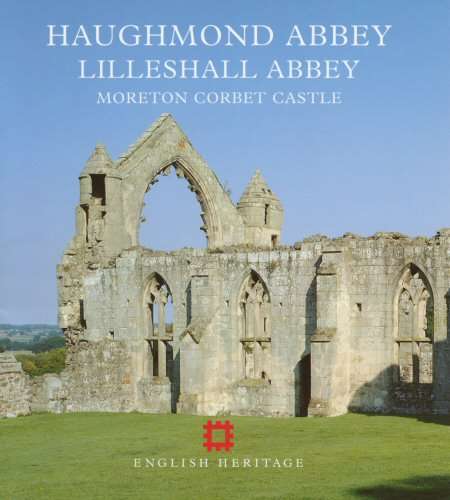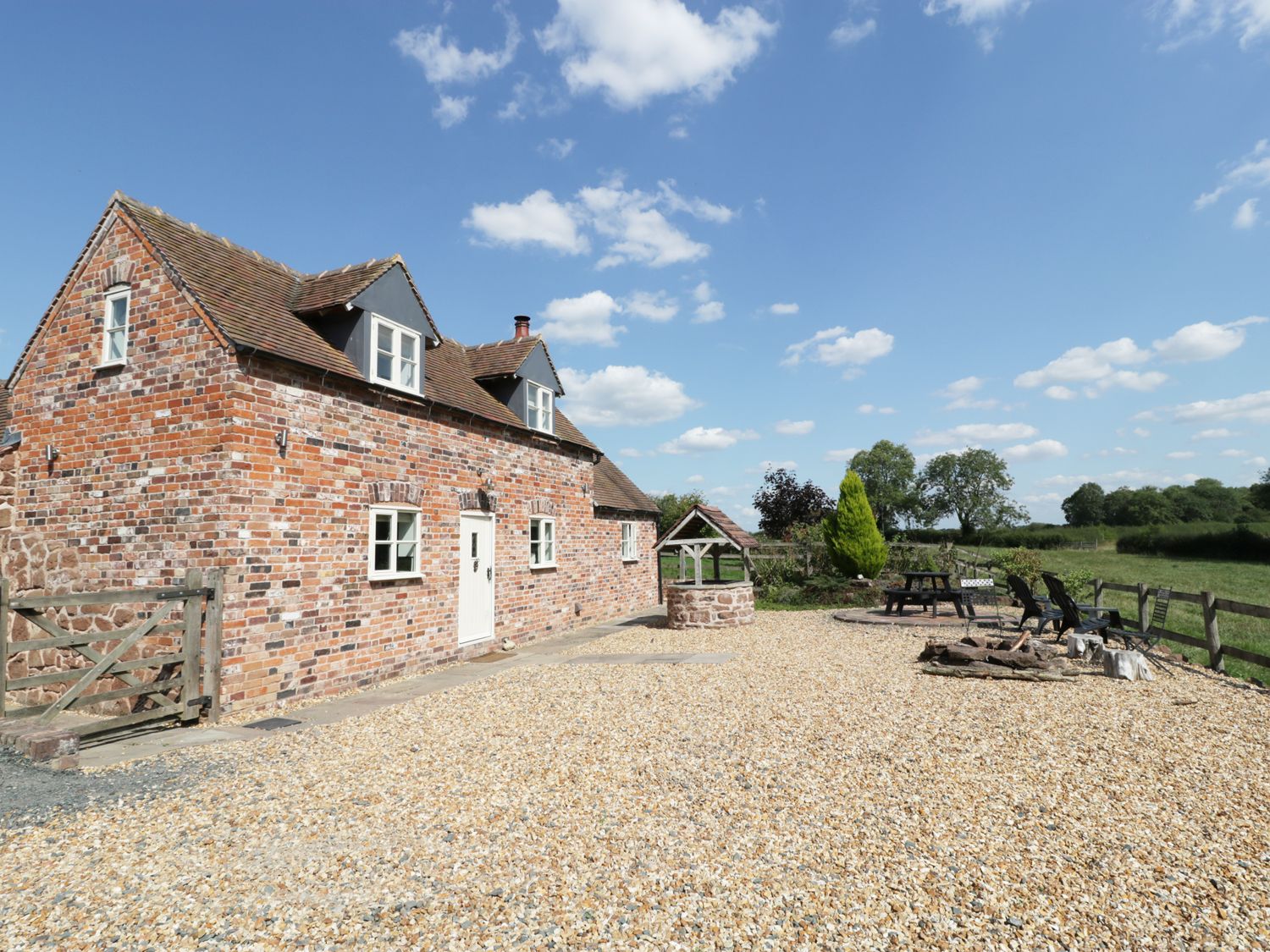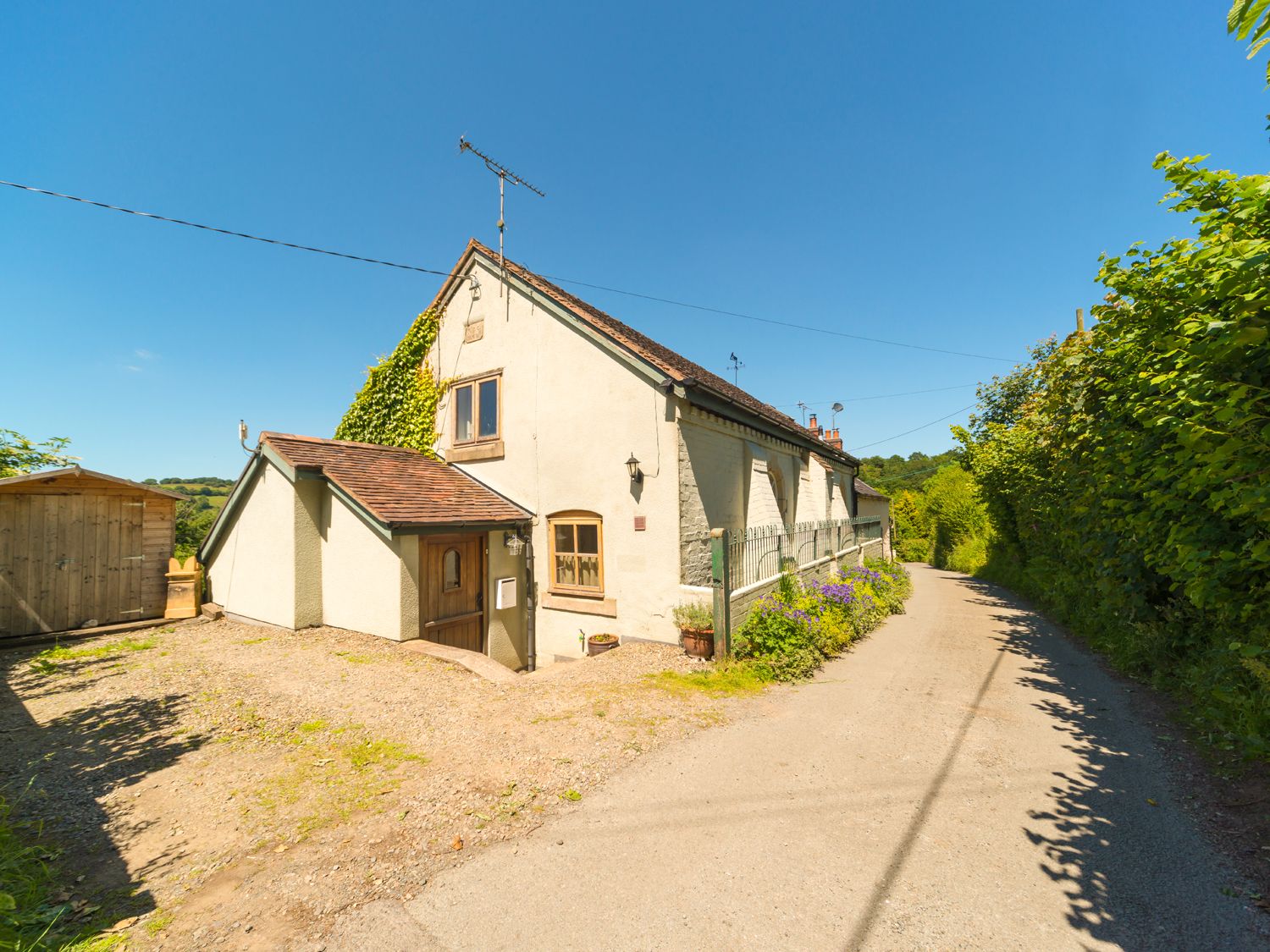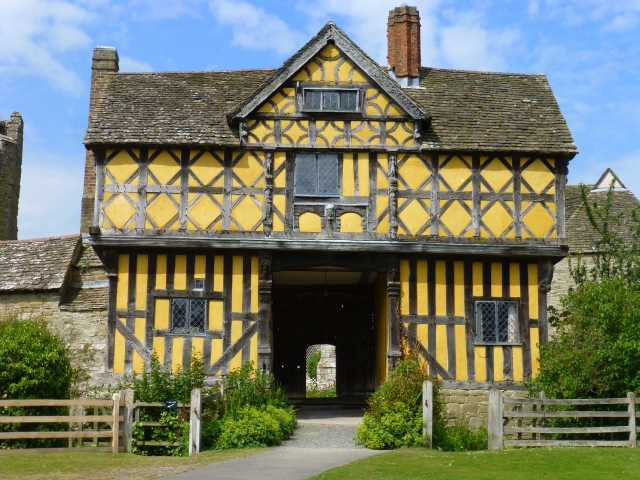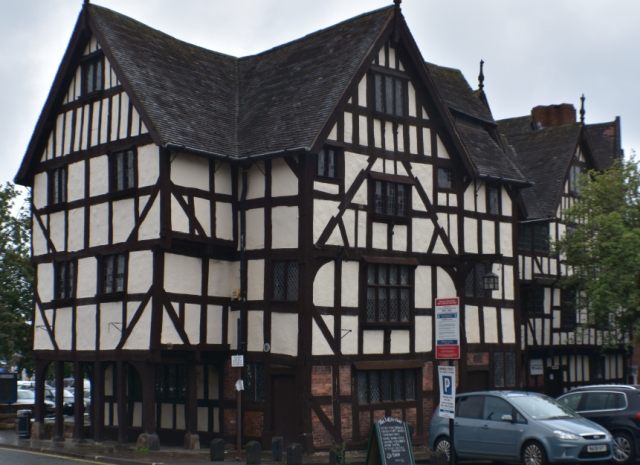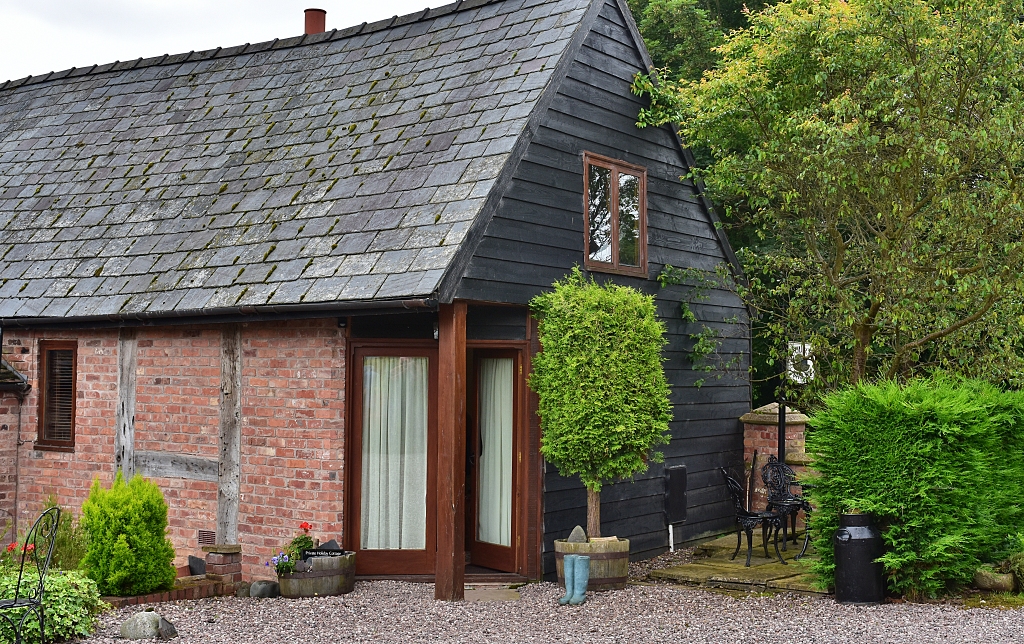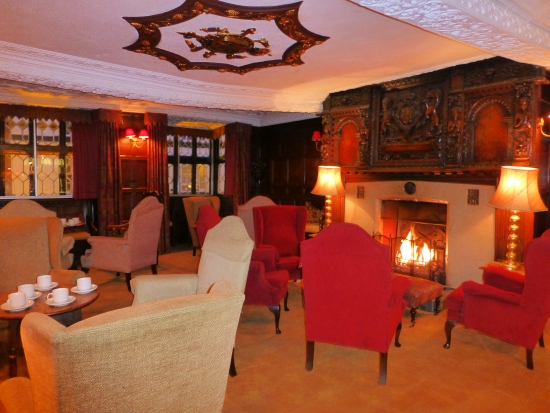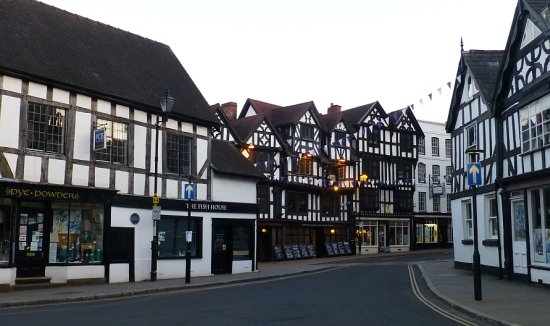Moreton Corbet Castle
Castles, with their long and often violent history and their balancing act between homestead and protective keep, tend to be a mongrel
mix of styles and designs. Moreton Corbet Castle, an amalgam of 13th
century stone castle and grandiose Elizabethan pile, is no exception.
Moreton Corbet is situated 10 miles north east of Shrewsbury in Shropshire and looking at the tiny village and the fields surrounding it, it seems an unusual place for such a grand building
A Tour Around Moreton Corbet Castle
Imagine that you're with us as we're sitting in the bailey or courtyard with our backs towards the kitchen fireplaces. The gatehouse is to the left, the great tower to the right and we're looking out over the Elizabethan wing.
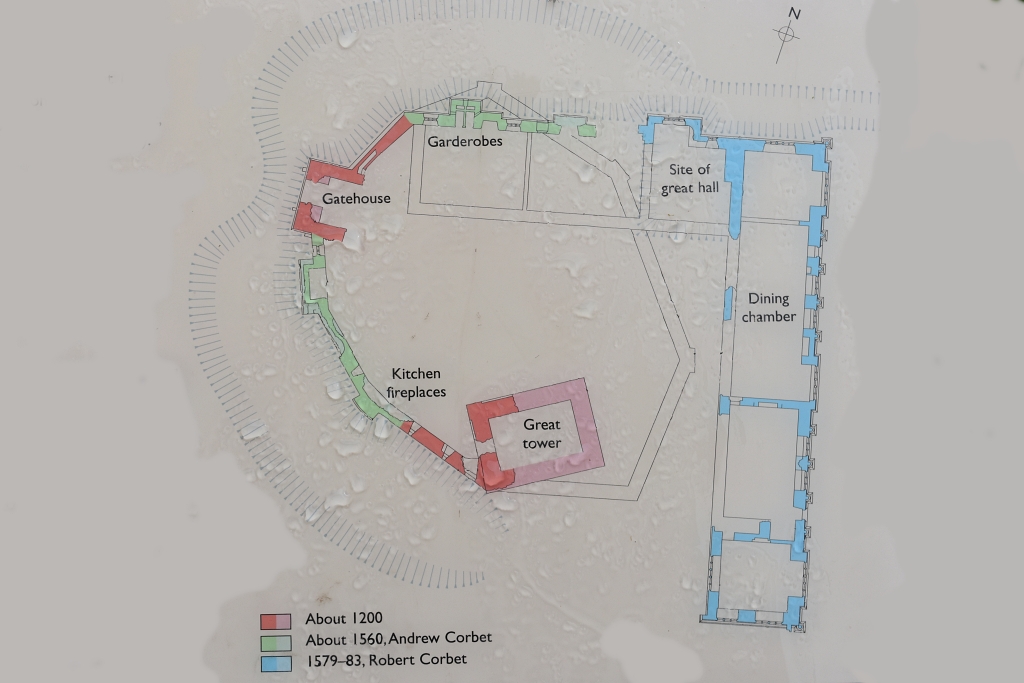 Plan View of Moreton Corbet Castle taken from English Heritage Information Board
© essentially-england.com
Plan View of Moreton Corbet Castle taken from English Heritage Information Board
© essentially-england.comMoreton Corbet is another remote location in Shropshire, a little off the beaten track. Our planned day changed when the rain started to pour down just before we were due to start a 2-3 hours walk. As we drove back towards Shrewsbury the rain stopped and allowed us to explore this fascinating castle. It's all freshly washed and looking clean. There’s no one else here, the site is ours.
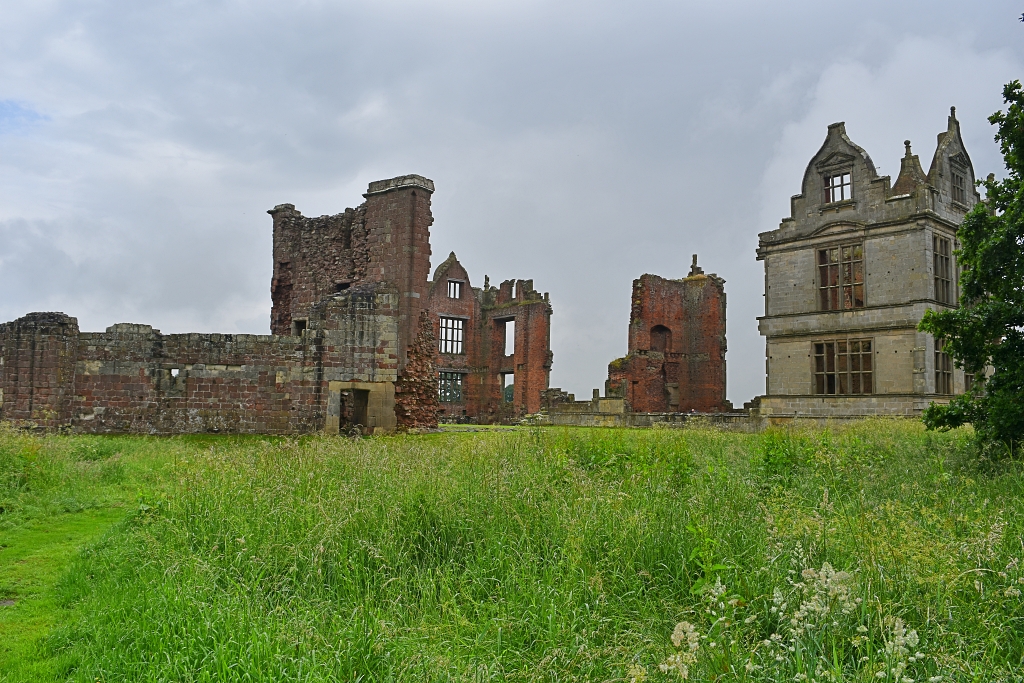 Moreton Corbet Castle © essentially-england.com
Moreton Corbet Castle © essentially-england.comThe sun is trying to peak through the clouds as they scuttle past. In the trees around the site the birds twitter away. It’s late June and a typical English summer day. The road on which we arrived is a small country road that remains quiet, the only disturbance to our peaceful surroundings are tractor noises as the fields are worked, but that’s countryside for you.
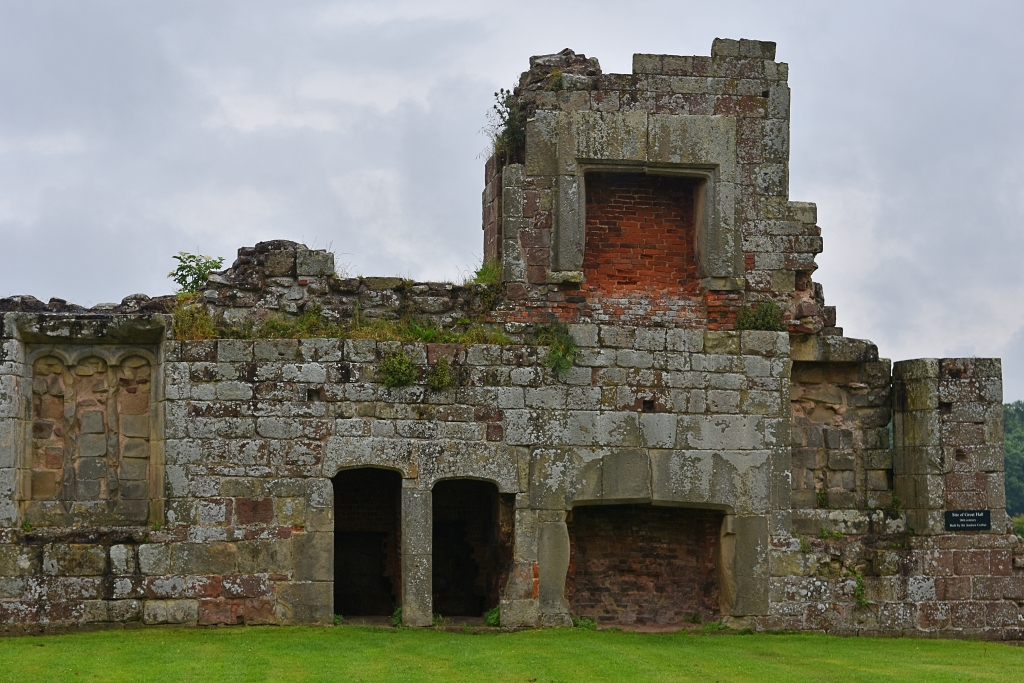 Moreton Corbet Castle Ruins © essentially-england.com
Moreton Corbet Castle Ruins © essentially-england.com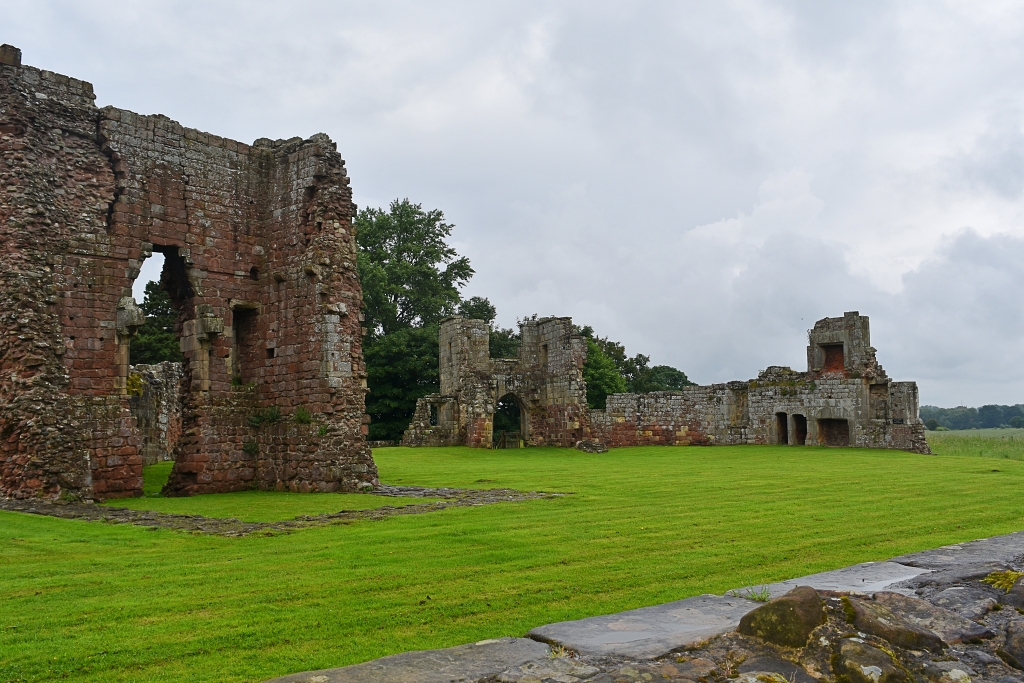 Moreton Corbet Castle Ruins © essentially-england.com
Moreton Corbet Castle Ruins © essentially-england.com800 years ago the air would have been ringing with different kinds of sounds. And probably a lot more of them. Castle life tended to be busy and noisy, perhaps a blacksmith at work, kitchen servants calling out to one another as they busily prepared food, and possibly some rich noblemen riding into the courtyard, spurs jingling and armour clinking, their horses breathing hard after patrolling their lands.
Moreton Corbet Castle started life as a wooden fortified house. Fortification was something of a necessity for wealthier families in the lawless Welsh Marshes territory. Around 1200 the castle was built in stone. A curtain wall and towers would have surrounded a raft of wooden building inside the enclosure. Both the gate house and great tower are believed to be from this period.
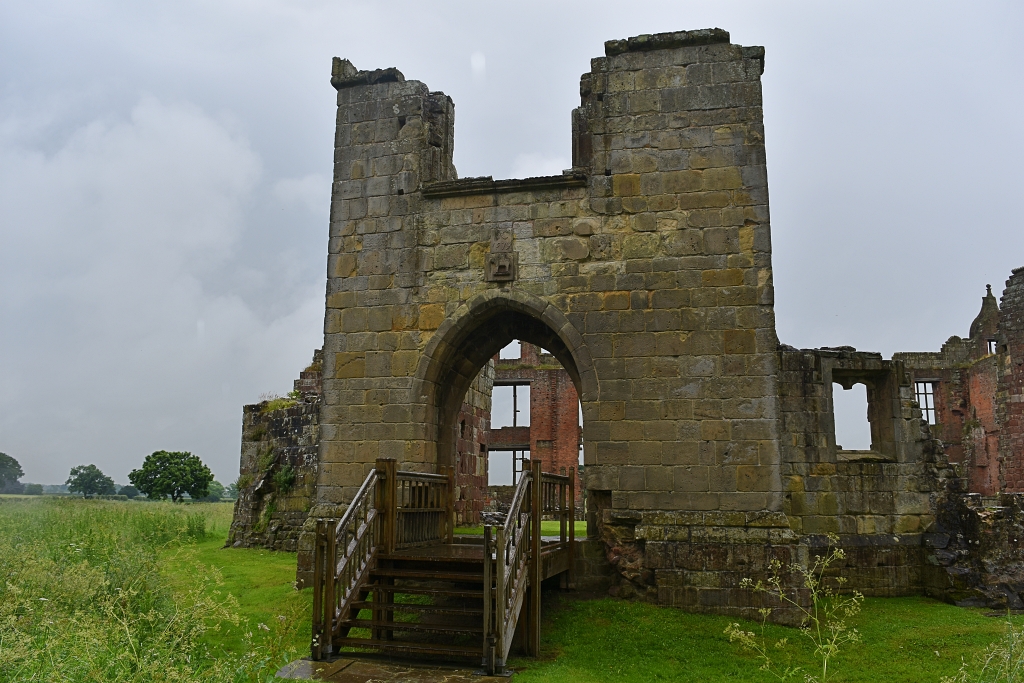 The Gatehouse © essentially-england.com
The Gatehouse © essentially-england.comWe entered the site by crossing a now very shallow ditch - once upon a time maybe a moat - and passed through the gatehouse as people have done since around 1200. Like many buildings that old, it has been modified. If you look up before entering you’ll see the initials SAC and the date 1579. There is also the Corbet family emblem of an elephant and castle. Sir Andrew Corbett remodeled the castle, but the date chiselled over the gate is a bit unexpected, because he died in 1578.
Maybe the modified castle was supposed to be finished in 1579 and the family move in and Sir Andrew never got to live in his newly finished home.
The refurbishment included the new kitchen range with its giant chimney. Next to this was a two story building where the ground floor was for storage and the upper floor for accommodation. There was also a new range of buildings to the right of the gatehouse which included a great hall with a substantial fireplace.
Upon the death of Sir Andrew, his son Robert, who had been an ambassador in Antwerp, inherited the house. It was Robert who re-designed the castle even further and built the fashionable new Elizabethan wing. Like his father, he never got to see the buildings finished either. He died of the plague in 1583 and it was left to his brothers Richard and Vincent to complete the building.
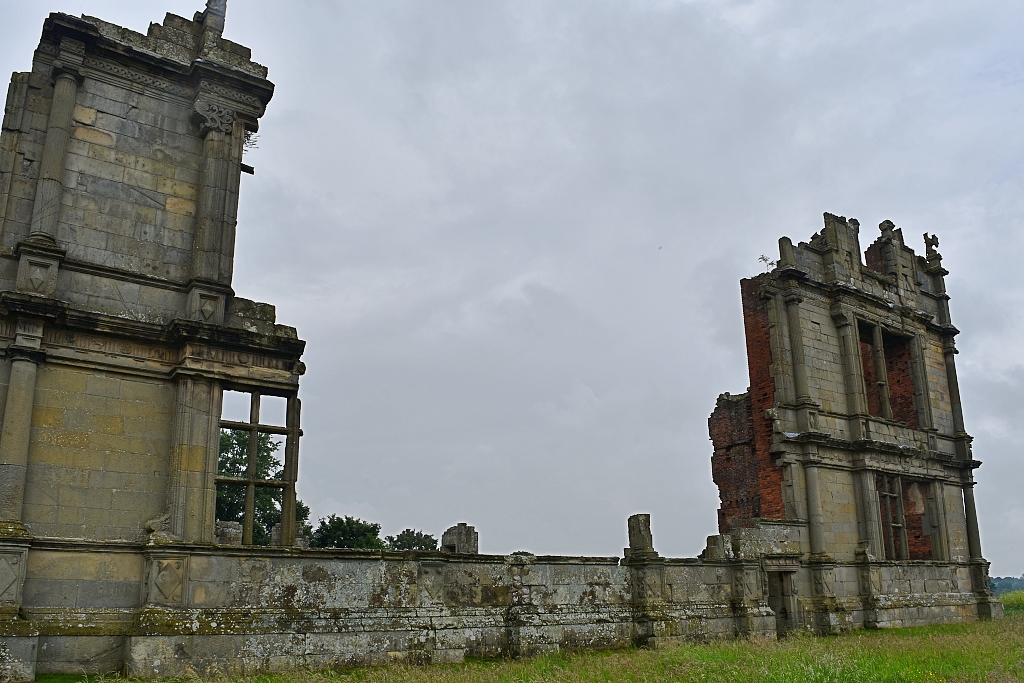 Length of Elizabethan Wing © essentially-england.com
Length of Elizabethan Wing © essentially-england.com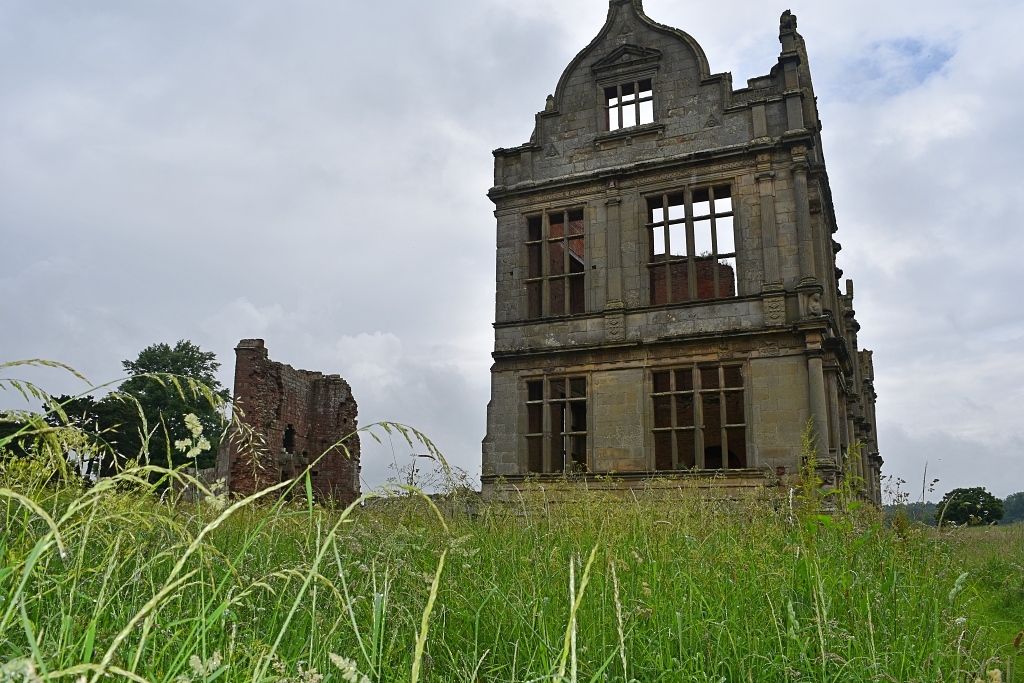 Windows and Gable of Elizabethan Wing © essentially-england.com
Windows and Gable of Elizabethan Wing © essentially-england.comAt this point we're walking around the Elizabethan part of the castle. The wind is picking up again and it looks like rain is due soon. The trees towards the church are starting to sway and rustle and we're in a hurry to get photos of all the building. There’s not much left of the castle's more modern part, although the outer wall appears quite substantial, and some of the detailing around the doorways has lasted well. Inside one of the grand rooms you can still see a highly decorated fireplace and in the room next door descend into a now damp vaulted cellar.
Once upon a time, this would have been a really elegant home, with the Corbet family hosting lavish dinner parties for the rich and famous of the day.
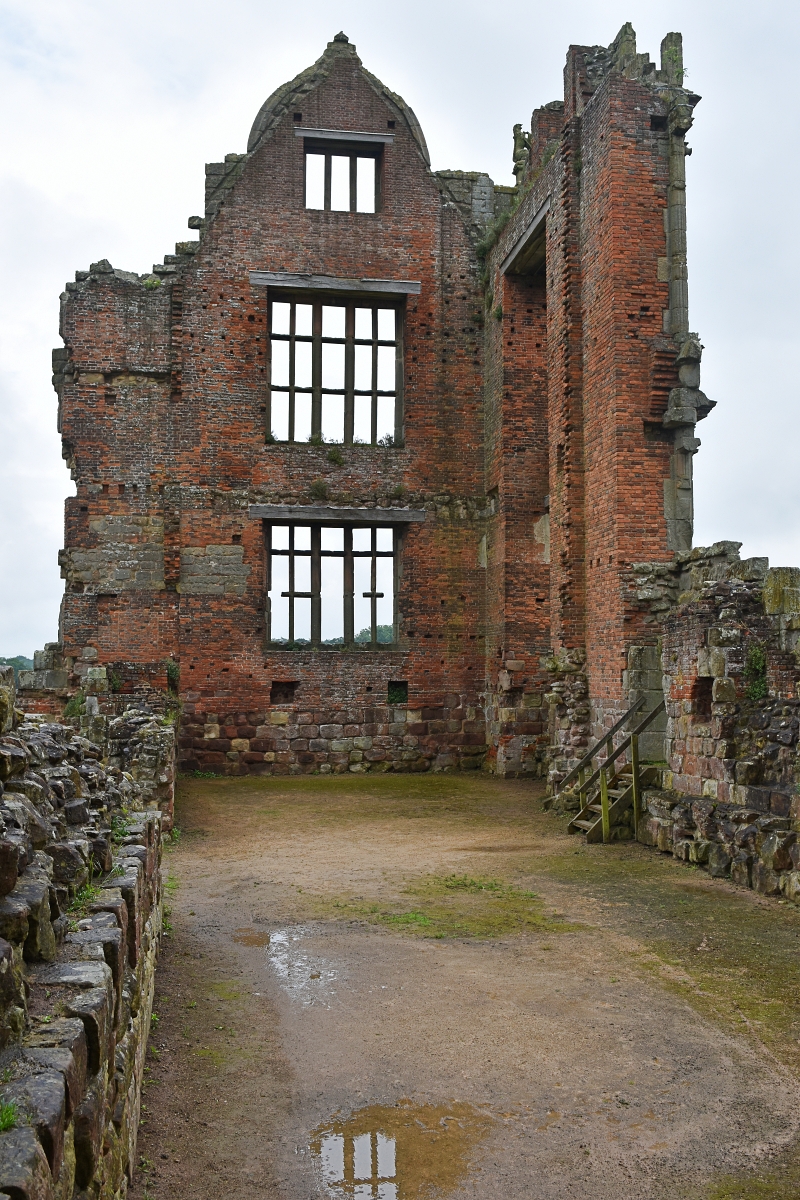 Inside the Dinning Chamber © essentially-england.com
Inside the Dinning Chamber © essentially-england.comAs stunning as Moreton Corbet Castle would have been to Elizabethan eyes, the splendour did not last. During the Civil War of 1642-1651, Sir Vincent sided with the king and Moreton Corbet Castle became the site of a number of sieges.
The house protected a Royalist garrison and naturally it was attacked by the musket and canon fire of the Parliamentarians. There are signs of this in the curtain wall of the castle.
The damage done during the Civil War years was extensive.
The Corbets repaired the house and continued to live here, but fortunes changed and - strange to imagine for us today - the house was abandoned and left to decay in the 18th century.
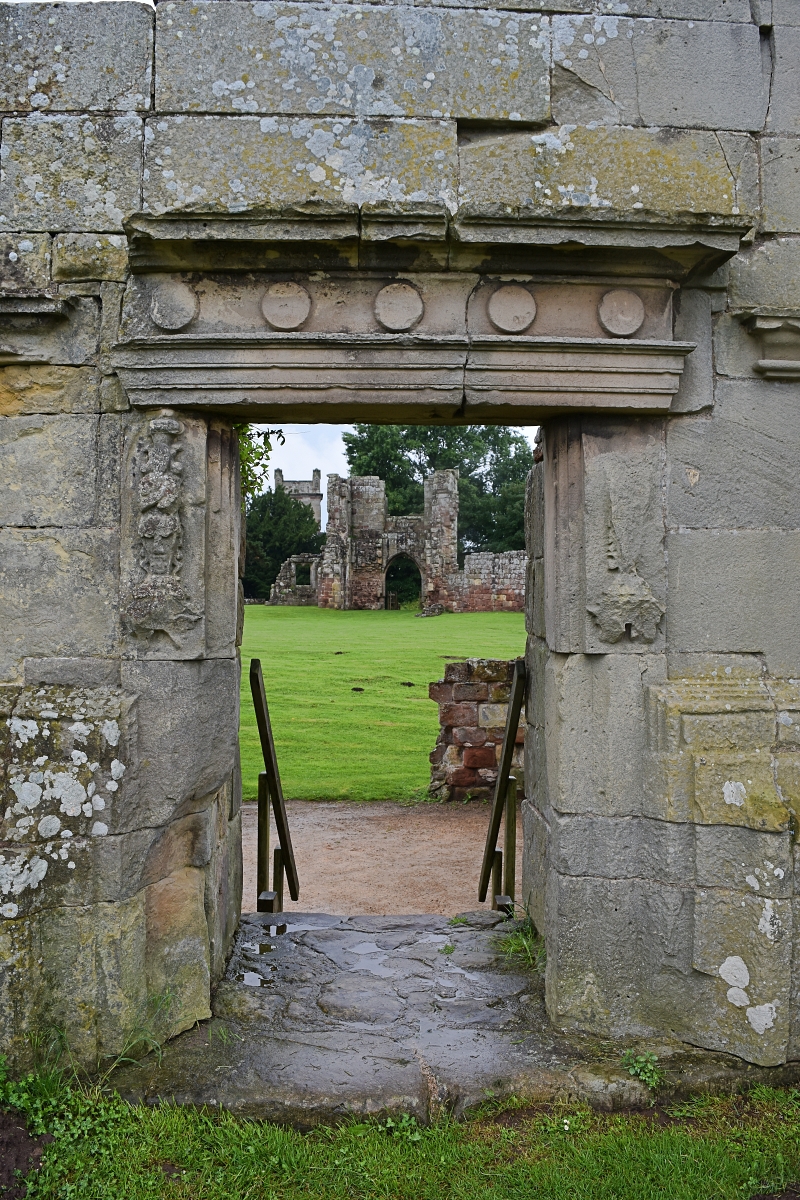 Detailed Carvings in the Stonework of the Elizabethan Wing
Detailed Carvings in the Stonework of the Elizabethan Wing © essentially-england.com
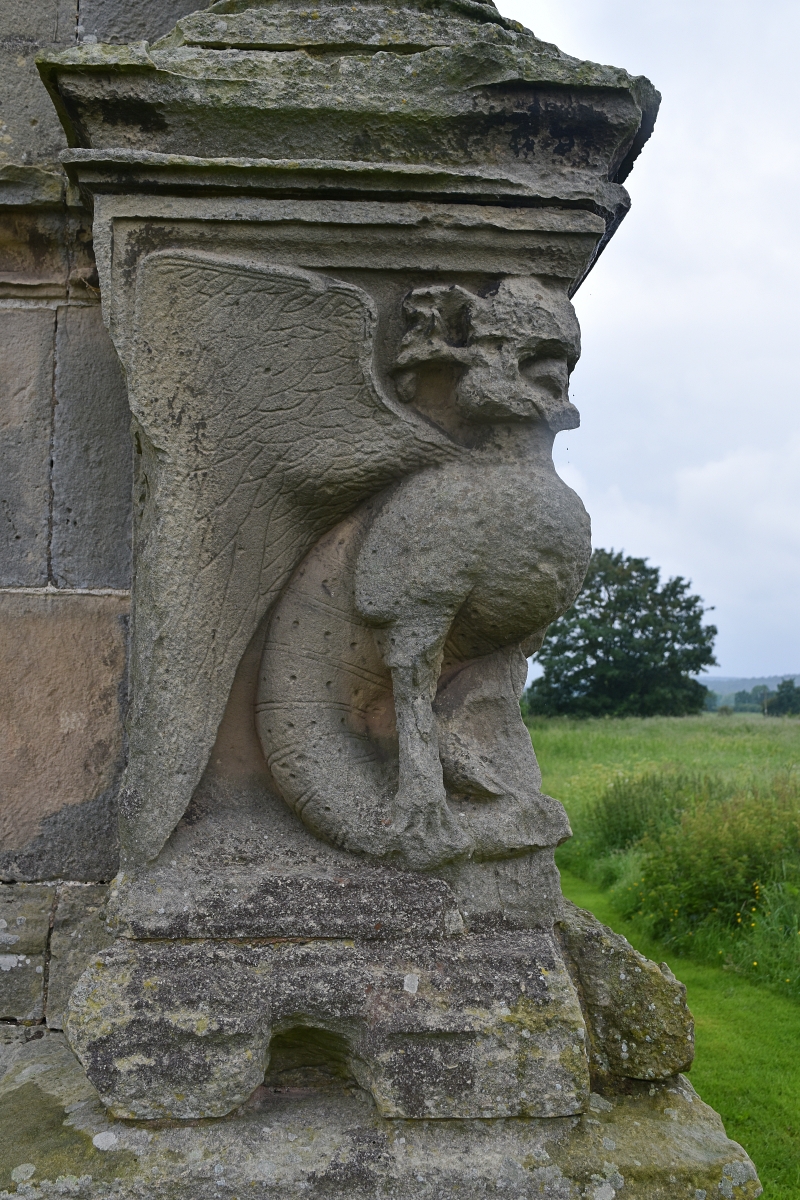 Detailed Carvings in the Stonework of the Elizabethan Wing
Detailed Carvings in the Stonework of the Elizabethan Wing © essentially-england.com
Today, its ruins offer an insight to the architecture and building design of the period between 1200-1600 and I would image it to be a wonderfully photogenic site when the light conditions are good or it’s eerily misty or foggy. There is plenty of space for bridal photos, family get togethers, a picnic or for kids to play around. It is also worth visiting the adjacent parish church of St. Bartholomew’s, which contains the chest tomb of Sir Richard Corbet and his wife.
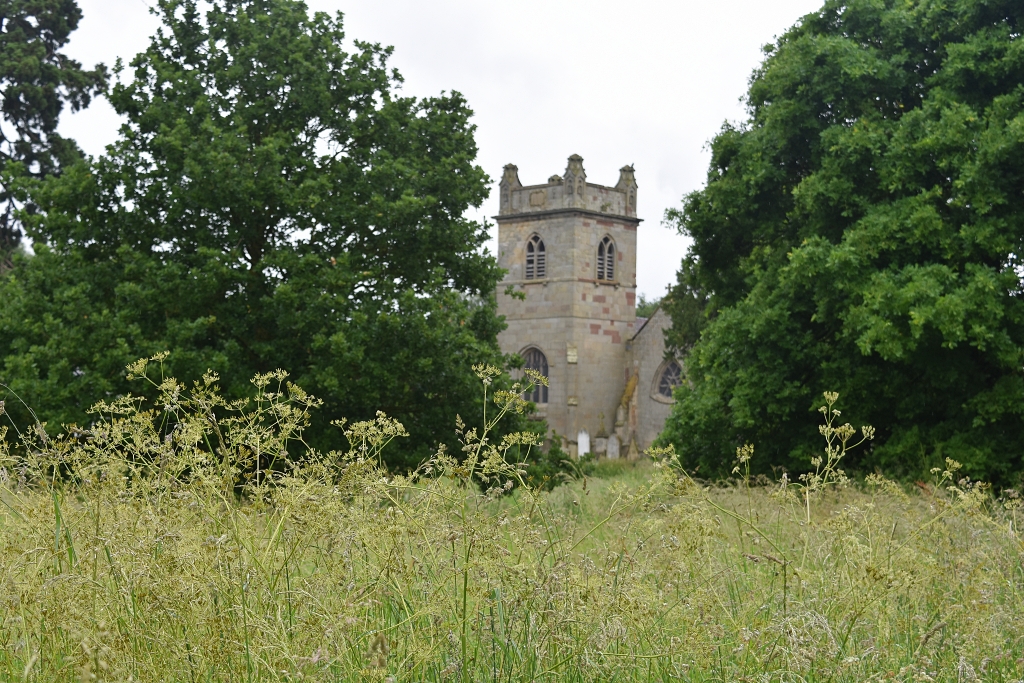 St. Bartholomew's Church © essentially-england.com
St. Bartholomew's Church © essentially-england.comPlease visit the English Heritage website if you would like more historical details about Moreton Corbet Castle, its opening times, and events that may take place here.
Are You Planning a Trip to Shropshire?
Shropshire is a marvellous place for history and food lovers! There's so much to see and do and taste, that you'll need more than just a short visit. If food is your thing, head to Ludlow and start exploring from there. For history lovers, Shrewsbury makes a great base with many historical sites in very easy reach.
Where You Could Stay
To see more self-catering cottages in Shropshire click here or check out holiday cottages in other parts of England by clicking here
Or, if you would prefer, here are some hotels in Shropshire.
What You Could See and Do
Here are a few places that should go on your must-see list:
- Wroxeter Roman City
- Shrewsbury & Shrewsbury Abbey
- Attingham Park
- Lilleshaw Abbey
- Offa's Dyke
- Cantlop Bridge
- Ironbridge Gorge, the Iron Bridge & Broseley Jitties
- Coalbrookdale Iron Museum, Jackfield Tile Museum, and Coalport China Museum
- Ludlow Castle
- Stokesay Castle
- Bridgnorth
Click here for a great list of things to do in Shropshire.
If you have enjoyed reading about Moreton Corbet Castle and look for other ideas for days out, then please click here to explore our Shropshire page.
